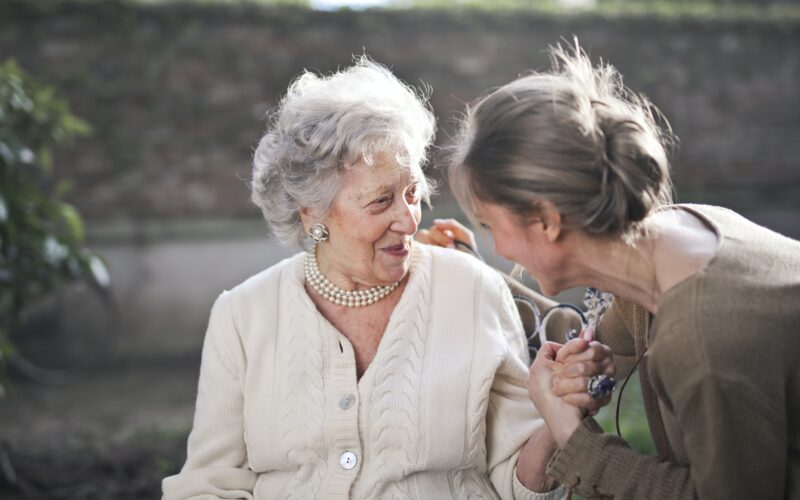Introduction:
Greying hair is a natural and common part of aging. However, the transformation from a full head of colored locks to silver strands often piques curiosity. The age-old question of why hair turns grey has fascinated individuals and scientists alike for centuries. As we grow older, many of us witness this color change, often accompanied by a mix of emotions – nostalgia for youth and an embrace of maturity. In this article, we will delve into the captivating science behind the greying of hair, explore the genetic lottery that decides when those silver strands might appear, and how external factors could expedite the process. Finally, we’ll walk through some encouraging tips on how to rock the grey hair look with grace and style.
Key Takeaways:
- The Biological Blueprint: Our hair gets its color from a pigment called melanin. As we age, the production of melanin decreases, leading to the hair turning grey. The intertwining dance of hair follicles and melanin concentration sets the stage for the color palette of our tresses.
- Genetics Dictate the Timeline: Just like how our genes determine the texture and natural color of our hair, they also play a pivotal role in deciding when those first strands of grey will make their appearance. If your parents or grandparents went grey early, there’s a likelihood you might see those silver strands sooner than others.
- External Factors Aren’t Just Myths: Stress, poor dietary habits, and environmental factors are more than just urban legends when it comes to influencing hair greying. These factors can significantly impact when and how quickly our hair transitions to grey.
- Grey is the New Black: With numerous celebrities and influencers embracing their natural grey, there’s been a cultural shift towards accepting and even celebrating grey hair. With the right care and style, you can turn your silver locks into your signature look.
The Biology of Hair Color:
Every strand of hair on our head starts its life within a hair follicle. The hue of our hair, whether raven black, chestnut brown, golden blonde, or fiery red, is determined by the presence and concentration of a pigment known as melanin. Let’s delve a bit deeper:
- Melanin: The Natural Hair Dye:
Melanin is produced by cells called melanocytes, which reside in our hair follicles. There are two primary types of melanin that define our hair color:- Eumelanin is responsible for black and brown shades. The more eumelanin present, the darker the hair.
- Pheomelanin imparts a yellow or reddish hue. Hair with a higher concentration of pheomelanin appears blonde or red.
- The Gradual Fade:
As we age, the melanocytes in our hair follicles become less active, producing less melanin. This decrease in melanin concentration results in our hair turning lighter, eventually leading to a silver or white appearance. This process isn’t about our existing hair strands changing color. Rather, as the old hair falls out and new hair grows in its place, the newer hair reflects the current level of melanin production, which decreases over time. - Uniformity is Rare:
Rarely do we find our hair turning grey uniformly across our head. This is because not all follicles reduce melanin production at the same rate. Hence, some might notice a salt-and-pepper look before a complete transition to grey, giving them a distinct and unique charm.
While the internal workings of our body play a pivotal role in this greying process, external factors and genetics further contribute to the timeline and pattern of greying. But before we attribute all our grey hair to age and biology, let’s delve into how our genes and environment play their part.
Genetics: The Inherited Timeline:
While looking in the mirror and spotting that first grey hair, one might ponder, “Did mom or dad grey this early?” This isn’t mere curiosity; genetics play a major role in determining the onset and progression of grey hair.
- Inherited Timelines:
Your genes dictate a lot about you, from your height and eye color to more intricate traits like metabolism rate. Similarly, they also influence the age at which you start greying. If your parents or grandparents witnessed an early onset of silver strands, it’s likely you may encounter the same. - The Gene Game:
Recent scientific research has begun to pinpoint specific genes associated with greying hair. One such gene, IRF4, plays a crucial role in regulating melanin production. Variations in this gene might result in an earlier reduction of melanin, leading to premature greying. - More Than Just One Player:
It’s essential to understand that not a singular ‘grey hair gene’ determines your greying pattern. Multiple genes collectively influence the process, making it a complex trait. This is why siblings in the same family, despite sharing genetic material, might experience greying at different ages or intensities. - Environmental Interplay:
While genetics lays the foundation for when you might start greying, it doesn’t work in isolation. External factors can either delay or hasten the process, emphasizing the importance of understanding and managing them.
The role of genetics in greying is undeniable, but it’s only one part of the story. Lifestyle, diet, and environment interact with our genetic framework, painting the full picture of our hair’s color journey.
External Factors Accelerating Grey Hair:
Just as a captivating novel intertwines various subplots into the main narrative, our hair’s greying story includes chapters influenced by external circumstances. Here, we unravel how our surroundings and lifestyle choices play crucial roles in the tale of our transitioning tresses.
- The Stress Factor:
“I’ve earned every grey hair!” is a statement many can resonate with. Stress, be it emotional, physical, or psychological, is often linked to premature greying. Chronic stress may lead to a depletion of stem cells in hair follicles, accelerating the reduction of melanin. - Environmental Culprits:
Our environment, laden with pollutants and harmful chemicals, can negatively impact our hair health. Regular exposure to pollutants can weaken hair follicles, indirectly influencing the melanin production process. Protecting your hair by wearing hats or scarves and using shampoos that combat pollution effects can help. - Nutritional Choices Matter:
A balanced diet is essential for overall well-being, and our hair is no exception. Deficiencies in certain vitamins and minerals, like vitamin B12, iron, or copper, can hasten the greying process. Ensuring a well-rounded diet, rich in antioxidants, vitamins, and minerals, can keep your hair vibrant for longer. - Chemical Exposures:
Frequent use of chemical-laden hair products or treatments can impact hair health. Overusing dyes, especially without appropriate care routines, can lead to earlier greying. It’s crucial to opt for gentler, more natural hair care products and limit chemical treatments. - Health Conditions:
Certain medical conditions, like thyroid imbalances or vitiligo, can lead to a quicker onset of grey hair. It’s essential to maintain regular health check-ups and seek medical advice if premature greying accompanies other health concerns.
Though we cannot entirely halt the clock on greying, understanding these external influencers allows us to make informed decisions. Embracing protective measures can potentially delay the appearance of those silver strands.
Embracing the Grey Hair – Tips to Rock the Look:
The societal perception of grey hair has come a long way. What was once viewed as an irrevocable sign of aging is now celebrated as a symbol of experience, wisdom, and even trendiness. Whether you’ve decided to embrace your natural grey or are contemplating the idea, here are some tips to make sure you wear your silver crown with pride and style.
- Own the Transition:
The journey from colored to grey hair can be a gradient process. Instead of resorting to frequent dye jobs, consider trendy hairstyles like ombre or balayage that embrace the mix of colors, making the transition smoother and chic. - Hydrate and Nourish:
Grey hair can be naturally drier and coarser. Ensure you’re using moisturizing shampoos and conditioners, and indulge in regular deep-conditioning treatments. This will give your hair a soft, healthy, and vibrant appearance. - Purple Shampoos are Your Friend:
Over time, grey hair can develop a yellowish tint due to environmental factors. Purple shampoos or toners can counteract this, ensuring your grey remains bright and fresh. - Reconsider Your Makeup and Wardrobe:
The change in hair color might warrant a reevaluation of your makeup palette and wardrobe choices. Opt for hues that complement and highlight your new hair color, making you look radiant. - Protection is Key:
Grey hair can be more vulnerable to environmental damage. Use protective hair serums, wear hats when out in the sun, and consider reducing heat styling to maintain the integrity of your silver strands. - Seek Professional Advice:
Transitioning to grey, especially if you’ve been coloring your hair for years, can be a nuanced process. Consult with a professional hairstylist who can guide you through the journey, offering tailored advice for your hair type and complexion.
Remember, grey hair doesn’t just signify age; it represents stories, experiences, and wisdom. In today’s era, many choose to wear their silver hair as a style statement, a testament to embracing natural beauty. With the right care and mindset, grey can indeed be the new glamorous.
Conclusion
The journey of understanding why hair turns grey is akin to unraveling a beautifully complex tale. With intertwined roles of genetics, lifestyle choices, and external factors, this narrative is unique for each one of us. While the molecular mechanics boil down to melanin production and its decline over time, the triggers and accelerators of this process range from our genes to the very environment we live in.
Yet, beyond the science and the why’s lies a more profound truth. Grey hair isn’t just a color or a sign of aging. It’s a canvas that bears witness to our life’s myriad experiences, joys, stresses, and wisdom. As our society grows increasingly inclusive and diverse, the stigmas associated with grey hair are slowly eroding. Today, it’s not just about understanding why we grey, but also about embracing and celebrating it.
In the end, whether you choose to color, transition, or flaunt your greys, the most vital takeaway is to wear it with confidence and pride. For in the grand tapestry of life, every strand, be it black, brown, blonde, or grey, adds depth, character, and beauty to our unique story.
And with that, our exploration on the age-old question of why hair turns grey comes to a close. I hope this has been an insightful journey for you, offering both understanding and inspiration.




